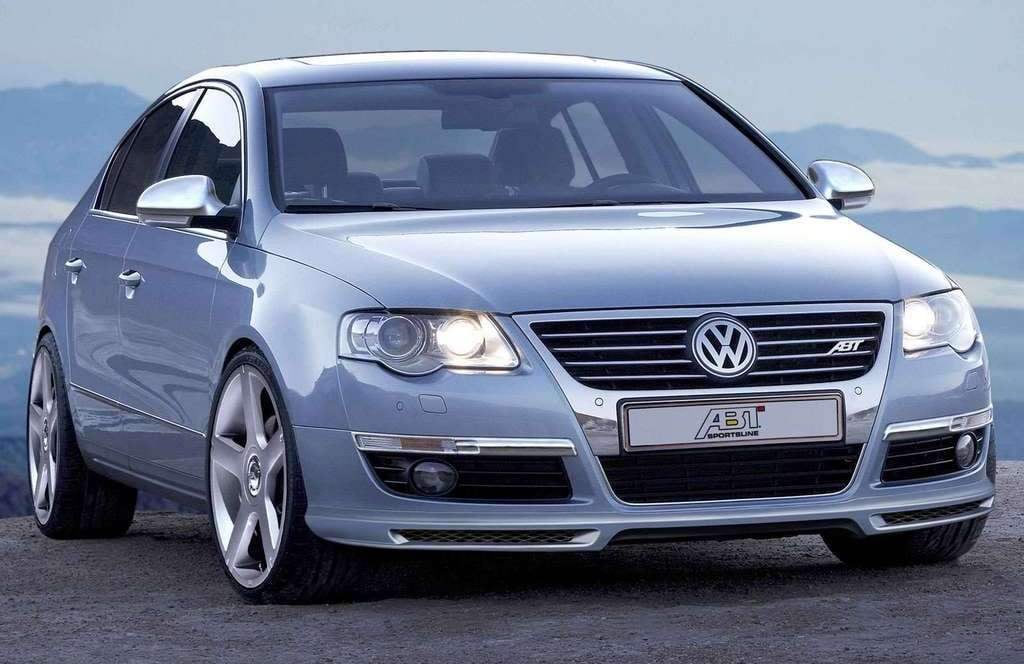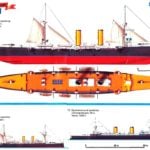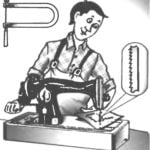 The VW PASSAT sixth generation. As you know, the trade winds — it’s steady air currents in tropical latitudes over the ocean. They say that the strength and consistency of these winds are the reason that family classic German car company Volkswagen was at one time given the name of the wind — PASSAT.
The VW PASSAT sixth generation. As you know, the trade winds — it’s steady air currents in tropical latitudes over the ocean. They say that the strength and consistency of these winds are the reason that family classic German car company Volkswagen was at one time given the name of the wind — PASSAT.
The first family cars with the same name issued by the West German firm VOLKSWAGEN in 1973. It was a FWD car on the platform of the AUDI 80 1972 issue, which was offered to customers in many variants with engines from 1297 to 1588 cm3. The success of the new machines was truly stunning — only in 1974 implemented 133 thousand cars, and in December 1976 the total number of issued VW PASSAT reached a million!
The VW PASSAT was produced until 1980 when it was replaced by the next-generation PASSAT. The new car came out initially in variants of hatchback and station wagon, however after the company released a PASSAT in the sedan, which received its own name — SANTANA second generation Machines agregatirovatsya with a 1.6-liter naturally aspirated 54-horsepower diesel engine and 5-cylinder petrol, 2.2-liter engine capacity of 115 HP, the Firm also produced four-wheel drive version of the versatile VW PASSAT VARIANT GT SINCRO (1984).
VW PASSAT third generation rolled off the Assembly line in the spring of 1988. It was quite modern by today’s standards, the car and the way they are today, many running on Russian roads, and the design of these cars allows them to merge with the traffic of the third Millennium. Interestingly, VW PASSAT third generation was produced only in the versions of the sedan and station wagon.

VW PASSAT first generation (1977)

VW PASSAT SANTANA the second generation (1980)
In 1993, the VW PASSAT has undergone a major upgrade so that it belongs to the fourth generation. The design of the car has undergone major changes, even the angle of the windshield is different. In serial equipment of the car had airbags, the belt tensioners and brakes with anti-lock braking system (ABS).
For this VW PASSAT was developed new engines — petrol 1.6-liter rated at 100 HP and 90-HP turbo diesel that consumes only 5.3 liters of fuel per 100 kilometers.
The PASSAT is constantly upgraded, gradually approaching the vehicle, comfort and power to the car business class.
In 1996, the firm presented to the public, the family car the fifth-generation PASSAT, which was first standardized with the A4 and A6 cars company Audi. Fifth VW PASSAT was created on a fundamentally new technological level — it was developed a fully galvanized bodyshell with high torsional rigidity of the New car, equipped with 4-, 5 – and 6-cylinder petrol and diesel engines capacity from 90 to 193 HP, produced in the future only with a body of type “sedan” and “universal.” In 2001 came off the Assembly line VW PASSAT with 275-horsepower W8 engine. In late 2004, released its 13-millionth VW PASSAT.

Geometric diagram VW PASSAT 2005 issue

The front suspension of the new VW PASSAT with racks McPherson

Rear four-link suspension

One of the engines of the new VW PASSAT 1.6 FSI with an output of 115l.with.

The design of the driver’s seat
The first official screening of the VW PASSAT sixth generation took place in Hamburg on February 15, 2004 New model, according to specialists, is already almost fully complies with the requirements of the car business-class — in size, the specific design, solid interior. PASSAT release in 2004, which became longer and wider than its predecessor, reminiscent of the VW PHAETON Executive
The new PASSAT is saturated with a considerable number of advanced technical developments that facilitate communication between man and machine. So, instead of the usual for many cars the ignition key from the VW PASSAT — electronic key FOB. To turn on the ignition with the FOB inserted in the so-called slot; when you run the motor enough to push until it stops on the protruding part of the key FOB. And for a fee the firm equips PASSAT with Kessy system, which previously was equipped with only Executive PHAETON. The driver of the car with such a system, may not get the FOB out of his pocket, the car recognizes him and opens the Central locking. Start the engine by pressing the button.
No machines and familiar to many drivers Parking brake-“Parking brake”. Instead — a small button located next to the light switch. Rastormazivate car yourself — just to put it in gear and hit the gas: when the torque reaches a certain value, the electronics will unlock the wheel. It should be noted that this system is particularly useful if you have to start uphill.

VW PASSAT third generation (1988)

VW PASSAT fourth generation (1993)


VW PASSAT sixth generation (2005)
By the way, front and rear brakes car — disc, and the front and even ventilated.
When designing the car’s chassis, the designers have developed a new four-link rear suspension independent with stabilizer, providing virtually silent operation. Such a perfect spring and independent front suspension McPherson-type, is made of aluminum alloys.
The new PASSAT is equipped with a solid range of engines. It’s 4 – and 6-cylinder petrol engines with direct fuel injection and 1.6 FSI (115 HP), 2,0 FSI (150 HP) turbocharged 2.0 TFSI (200 HP) and 3.2 FSI (250 HP) and a turbodiesel capacity of 105, 140 and 170 HP
All motors are aggregated with a robotized gearbox, controlled using servos. This box has two clutches, allowing you to shift gears without interrupting the flow of power automatically, very smoothly.
Steering — the power of the Executive electric motor is mounted not on the steering shaft, but directly on the steering mechanism that brings together characteristics of electrical power with the appropriate parameters more flexible in the power steering.

The front part of the vehicle interior

The instrument cluster

Brake the latest VW PASSAT have a very interesting device that allows you to clean brake pads from dirt and water. To do this, periodically the pads lightly pressed against the disks, removing from them everything that hinders braking. By the way, the machine equipped with a tow bar to tow trailers equipped with anti-skid system ESP + Trailer Stabilisation.
New VW PASSAT has absorbed a lot of modern technical solutions. In particular, the machine is equipped with active cruise control which is able to maintain distance to the vehicle ahead: if it is reduced, the machine reduces the speed.
Technical characteristics of the car VW PASSAT release 2005

Among the new products, which are equipped with VW PASSAT include bi-xenon headlights, navigation system, tires of run flat type, not afraid of punctures, integrated cell phone with the device hands-free and voice dialing. Got in the car and the AC outlet voltage of 230 V.
Presentation of the VW PASSAT sixth generation took place in Geneva, at the International motor show 2005. The audience friendly met new car, especially as the prices were quite reasonable. Depending on specification the car in Germany will cost from 22 to 27 500 € 200. However, in Russia for the car in the middle of picking a buyer requests not less than 30 000 euros.
I. EVSTRATOV



